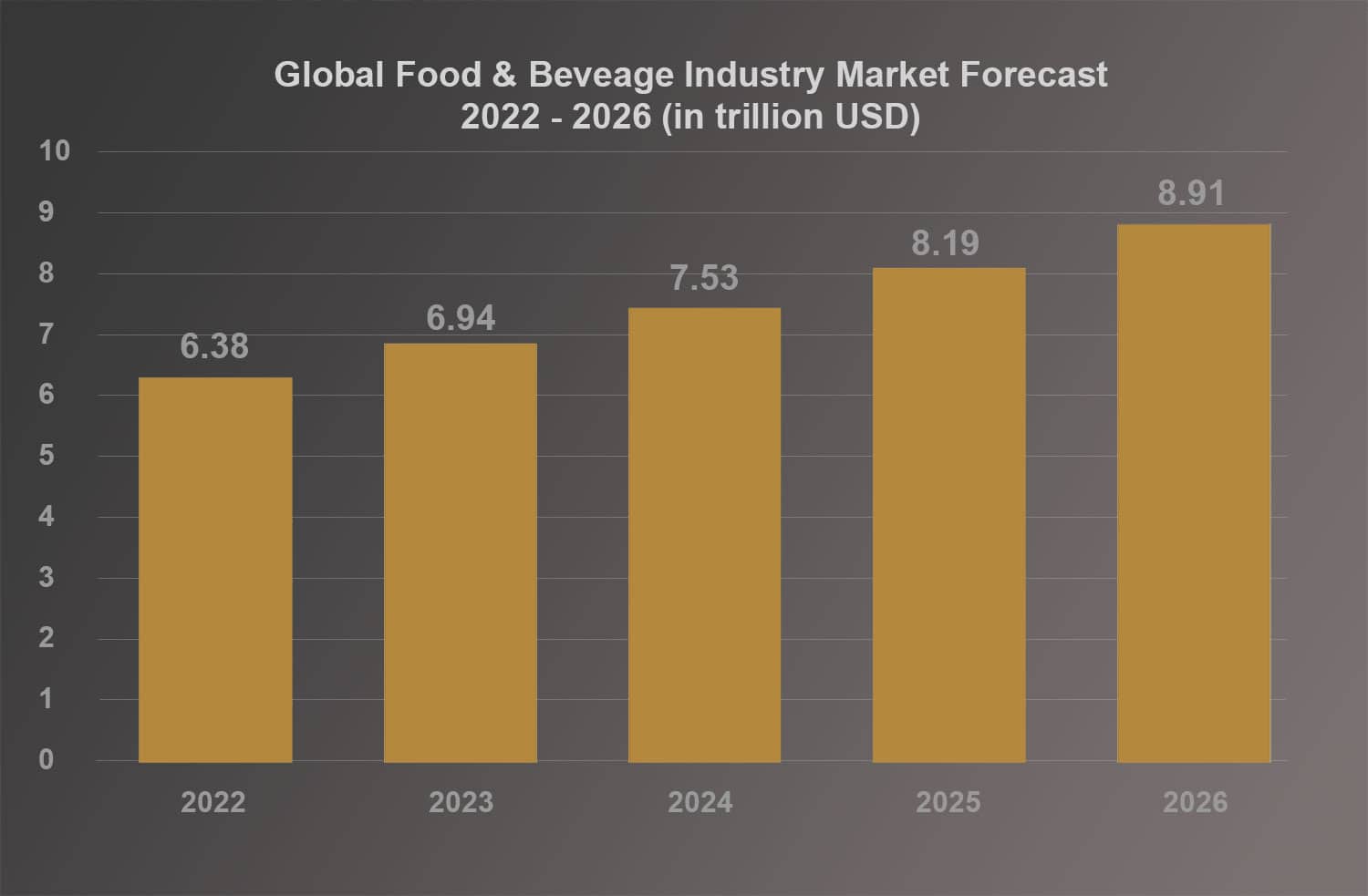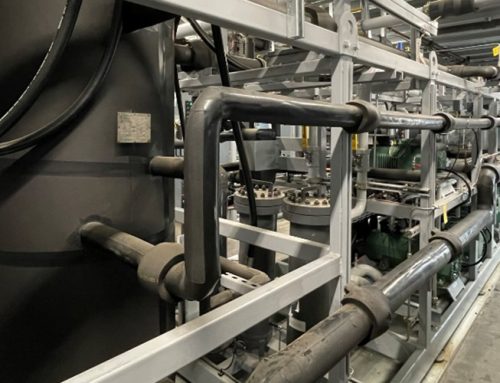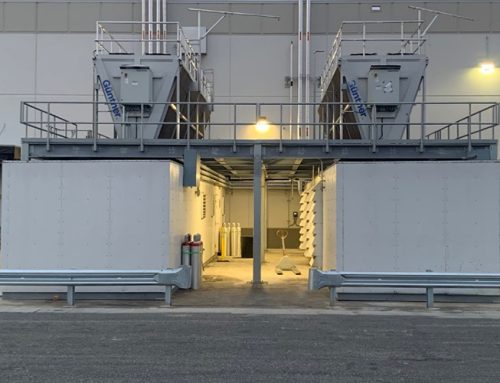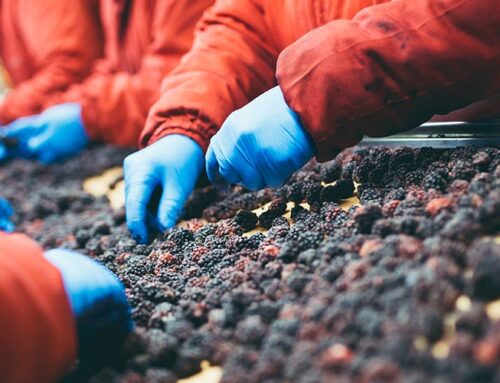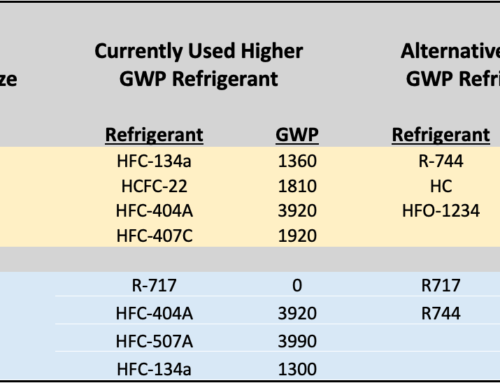What Is the Outlook for the Food and Beverage Production and Processing Market?
Expectations for growth in this market are high over the coming years due in large part to innovation in food processing technology and increasing demand for processed food. Additionally, the increased integration of automated technologies along with increased levels of research and development in food processing machinery expect to provide a boost to this market segment. Increasing health consciousness and subsequent shifting dietary patterns in both developing and developed regions should add impetus to the market’s growth over the next few years.
The global food and beverages market size is expected to grow from $5,817.4 billion in 2021 to $6,383.49 billion in 2022. The market size is expected to continue to grow to $8,905.5 billion in 2026 at a CAGR of 8.7% (see graph below). The largest regional contributor to the market’s total revenue in 2021 was Asia Pacific while Western Europe followed in second place.
Food and beverage companies can expect to see lower raw material costs due to the falling prices of crops in many countries because of an overcapacity situation. In the same manner, overproduction of certain crops is likely to result in higher profit margins for food and beverage companies. These increased margins will enable food and beverage companies to see productivity gains and drive the market going forward.
The onset of COVID-19 has had a massive adverse impact on the food and beverages market in 2020, driven in large part, by supply chain disruptions due to trade restrictions. Adding to the effect was a decline in consumption due to lockdowns imposed by governments across the globe. Food and beverage manufacturers depend on the supply of raw materials from domestic and international suppliers. As many governments restricted the movement of goods across countries and locally, manufacturers had to halt production due to a lack of raw materials. Also, restrictions on the trade of non-essential goods and fear of contamination through manufacturing facilities contributed to the decline. Although the pandemic caused great distress to food and beverage businesses throughout 2020 and 2021, a recovery is expected through the forecast period as the virus is an anomaly event and not related to any ongoing or fundamental weaknesses in the market or the global economy.
